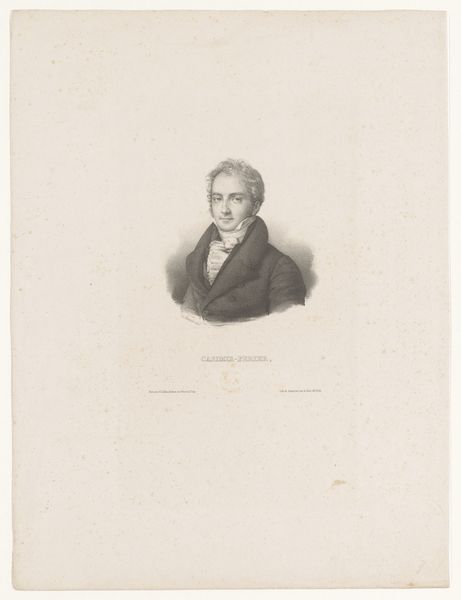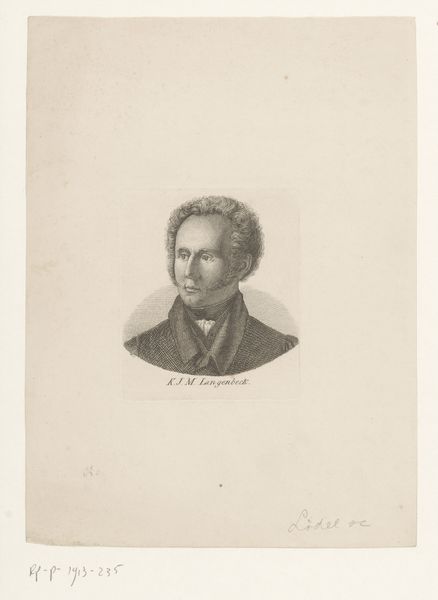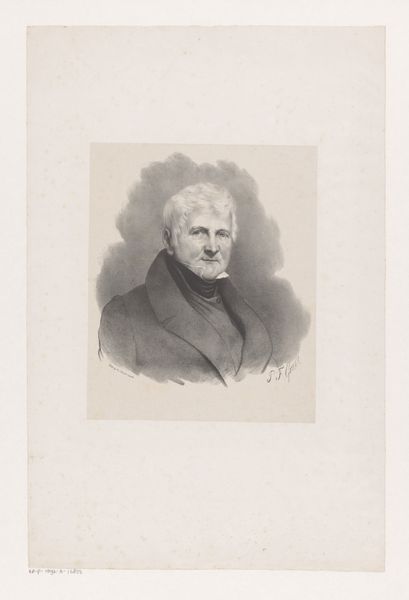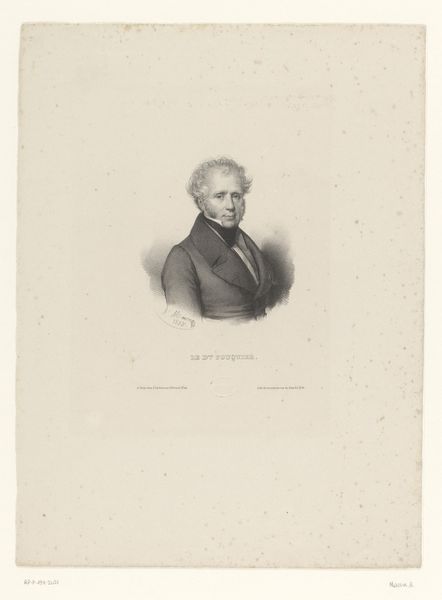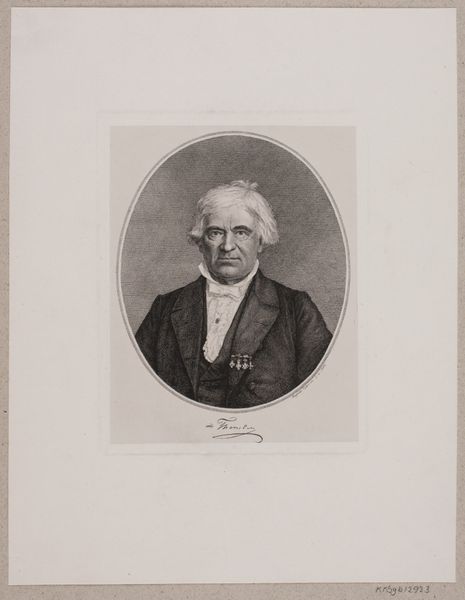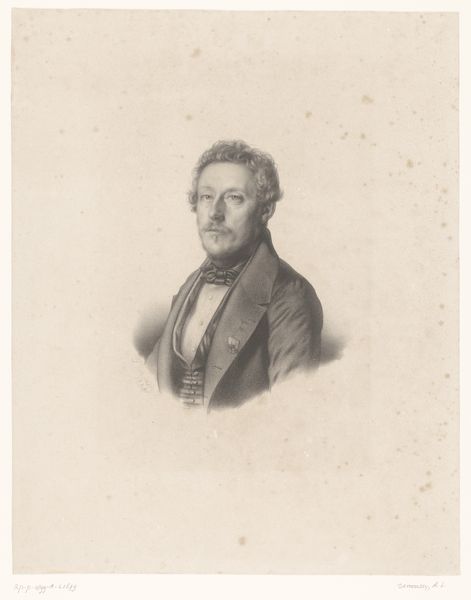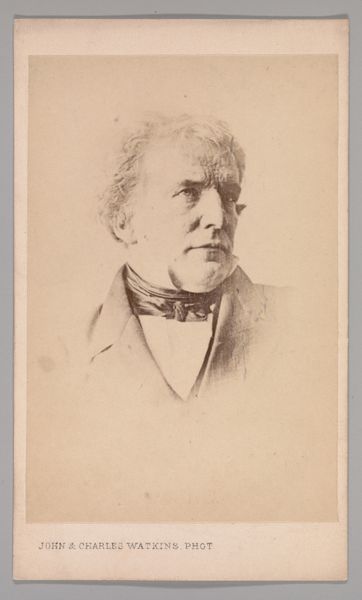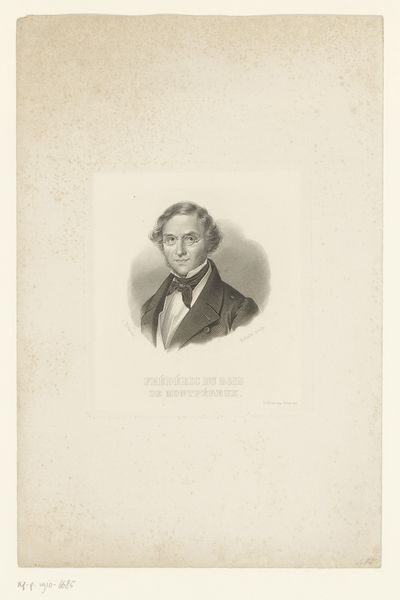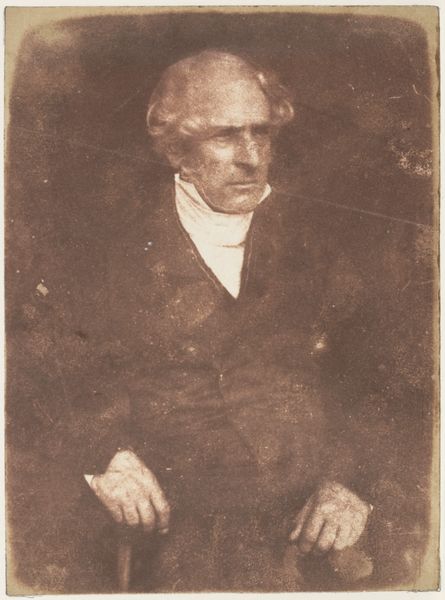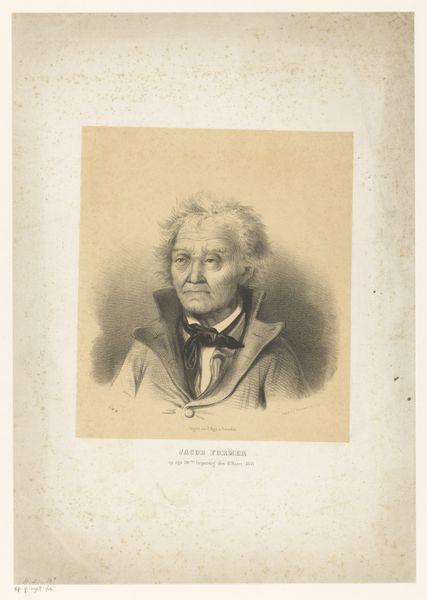
drawing, ink, graphite, engraving
#
portrait
#
drawing
#
pencil sketch
#
figuration
#
ink
#
pencil drawing
#
graphite
#
engraving
Dimensions: height 177 mm, width 114 mm
Copyright: Rijks Museum: Open Domain
Curator: Up next, we have Léon Brunin's portrait of Charles Rogier from 1884. It's rendered primarily in graphite and ink, an engraved portrait that holds quite a bit of historical weight. Editor: The weight is definitely evident. Even at this scale, the image projects such an air of seriousness. The deep etching around the eyes suggests a lifetime of contemplation and leadership. Curator: Absolutely. Charles Rogier was a pivotal figure in Belgian history, one of the founding fathers of the country and a long-serving statesman. Brunin’s portrait captures a man at the twilight of his career. Look closely, and you can see a miniature Order of Leopold, alluding to the Rogier's important functions during his life. The visual association with honour, leadership, and service is intentional, reflecting a calculated construction of Rogier's public image. Editor: Yes, the medal clearly functions as an important symbol. It provides context, situating him firmly within the realm of the political and cultural elite. Notice how the artist uses light and shadow around the eyes and mouth; he portrays a person marked by experience and resolve, not just a politician. His fluffy and bright white hair serves as contrast with his dark suite and bow tie, emphasizing the subject’s advanced age, even. Curator: The choice of engraving and drawing is particularly relevant, I think. While photography was available, engraving offered a degree of control and idealization. A printed image also allows mass distribution. This wasn't just about capturing a likeness; it was about cementing a particular version of Rogier's legacy in the public consciousness. Consider the role of such portraits in shaping historical memory and political discourse. Editor: It really comes down to that potent blend of symbolism and technique, doesn’t it? Brunin's meticulous cross-hatching almost suggests he is trying to scratch a bit deeper than what the eyes are showing to a man's lasting image and importance. Even with the man long gone, these lines work their subtle, persistent magic. Curator: Exactly. And for a portrait meant for broader dissemination, Brunin’s Portret van Charles Rogier achieves its purpose with striking efficiency. It bridges the man, the politician, and the burgeoning sense of Belgian national identity. Editor: It does so masterfully. Looking at it today, one gets a clear impression of the importance, but more surprisingly of the enduring weight of responsibility he must have borne.
Comments
No comments
Be the first to comment and join the conversation on the ultimate creative platform.

